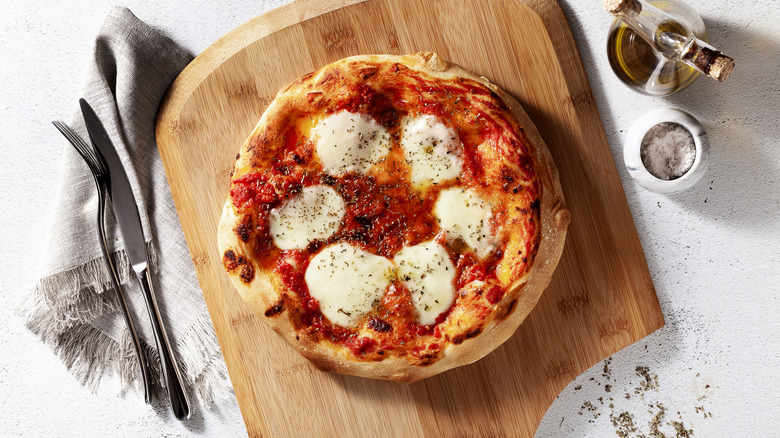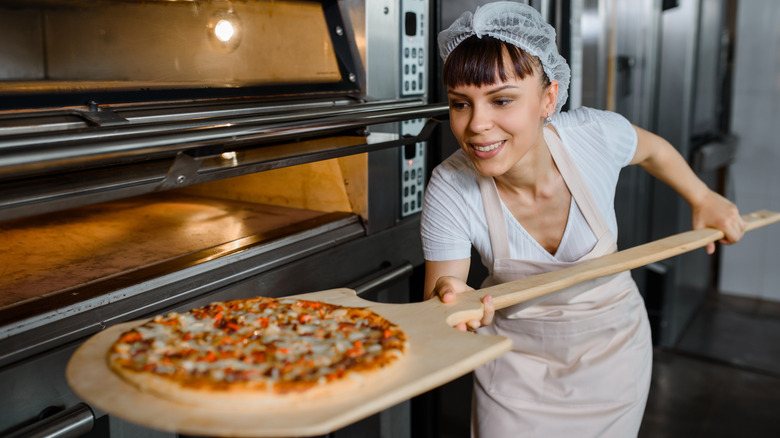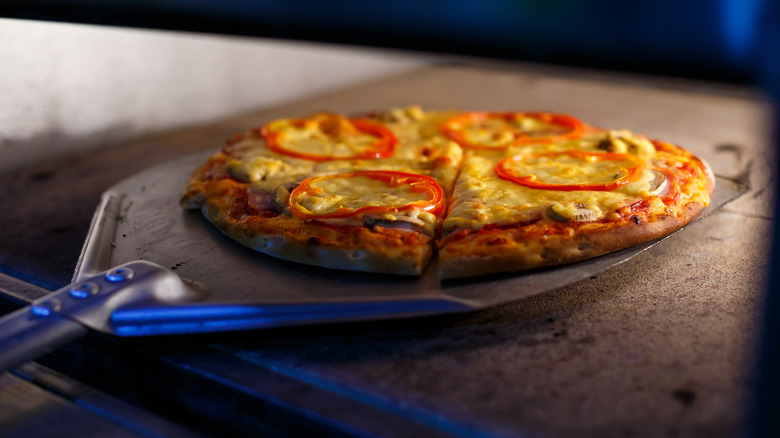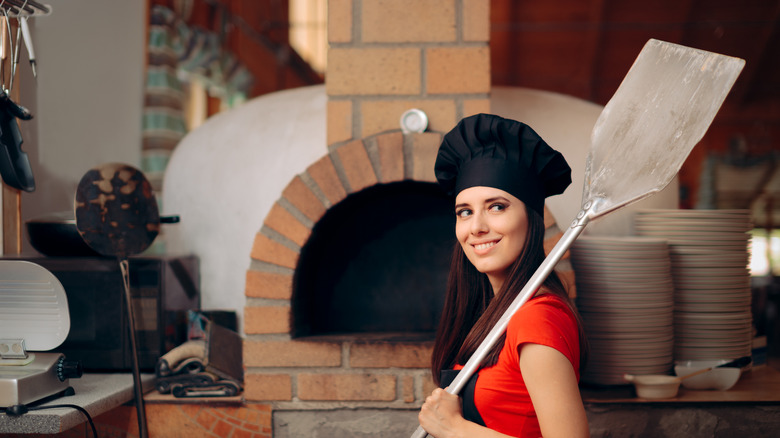Wooden Vs. Metal Pizza Peel: Which Is Best For You?
Like many other culinary dishes, Pizza has a methodology and vastly different styles and is in and of itself considered an art form in many circles. Some pizza places or pizza lovers engage in serious and passionate debates surrounding pizza, including highly sensitive topics like whether deep-dish pizza should even be considered pizza or if pineapple should ever be found on a slice. Pizza is a widely beloved dish in the United States, with over 200 million Americans regularly eating frozen pizza, the pizza industry is expected to grow to $23 billion by 2027, via Statista. Pizza isn't simply a dish you pick up in the frozen food aisle; it is one food that hundreds of restaurants specialize in around the country.
Some places swear by their rapid cook oven, others prefer the char of a brick oven, and some people like to bake their own pizza in convection ovens at home. But if you're planning on becoming your own at-home pizza connoisseur, you should invest in a few essential tools. Maybe you bought yourself a pizza stone or even went so far as to build a wood-fired pizza oven in your backyard, but one of the important tools you need to buy if you're invested in making your own quality pizzas is a pizza peel.
Wooden pizza peel
A pizza peel is a tool for placing pizza in the oven and the same one used to remove it once it has finished cooking, via Giordanos. You might recognize it as the object you see in pizza joints' kitchens with a long handle and a flat paddle where the pizza is placed. It is essential to keep yourself from getting burned while retrieving your food and rotating your pizza. But if you pay close attention, you might have noticed that not all pizza peels are alike; some are made of wood, while others are made of metal.
The wooden pizza peels are the classic choice. According to Pizza for Guys, it is the perfect tool for transferring pizza into a preheated oven. They have been used for centuries because the wood grain helps prevent the pizza dough from sticking to the peel, and the textured surface allows for a smooth transfer to the baking tray or stone. Traditional wooden peels tend to be heavy, but today many are also made lightweight from bamboo so that they are easily wielded by those packing less muscle. The Pizza Heaven says that some drawbacks of the wooden pizza peel are that you need to keep it regularly oiled to prevent warping and that it is more difficult to clean than the metal alternative.
Metal pizza peel
If you find the wooden pizza peel too heavy and difficult to clean, there is always a metal peel to consider. Mama Cucina claims that metal peels come with blades made from aluminum. These peels are super easy to wash compared to their wooden counterparts because you can scrub them with soap and water without worrying about damage, and they don't require air drying or oiling. Unlike wooden peels, they don't have pores and are nonabsorbent, so smells and stains don't stick. In this way, they are relatively low maintenance and easy to use.
As for how the metal peel interacts with pizza dough, there are a few downsides. According to Insider, the aluminum pizza peel might be lighter, thinner, and easier to lift than the wooden option, but because the metal is so smooth, the pizza dough sticks to it. Pizzacraft says there are a few ways to prevent this. First, flour your peel, creating a small non-stick layer between the dough and the aluminum. Another thing you could use is cornmeal, but don't use too much, or you'll create a crunchy cornmeal bottom to your pizza which will burn in the oven. The last tip is to move quickly; the less time the raw dough spends on the peel, the better.
Which should you use?
Both pizza peels have benefits and drawbacks, so how do you choose which option will work best for you? Mighty Pizza Stone suggests the wood pizza peel if you have arm power. It almost eliminates the pizza sticking to the tool, which goes a long way to prevent rips and tears and extra flour and cornmeal usage, which can burn the bottom of your pizza. The smooth transfer from peel to oven also means that your topping will stay intact, and the look of the wood is considered traditional and attractive to pizza makers in an aesthetic sense.
On the other hand, Foods Guy recommends the metal pizza peel for cooks who value easy cleaning and lightweight kitchen tools. Aluminum pizza peels are also perfect for people with delicate wrists and low upper body strength. Metal peels are long-lasting products that dry quickly, so if you are looking for an easy-to-pick-up and put-away tool, you should consider this option. The metal peel is also much thinner than the wood, making it easier to pick up the pizza or turn it, so if your pizza-making method requires a lot of rotating, perhaps a metal peel will be more of your style.



